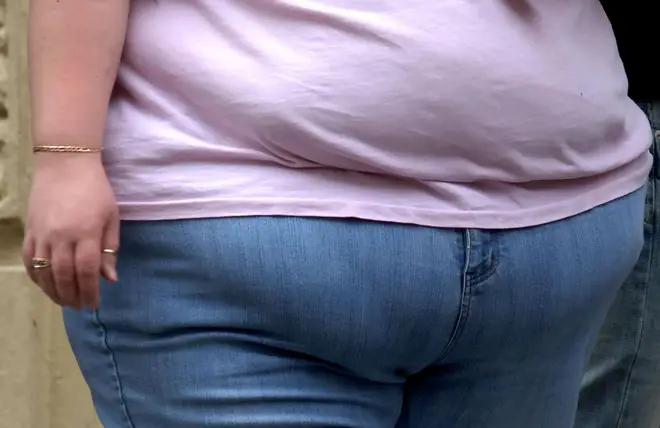
Iain Dale 7pm - 10pm
27 July 2020, 11:43

Boris Johnson has announced the government's national strategy for reducing Britain's bulging waistlines, so what will you see change? What is the definition of obesity? And what is the government's obesity strategy?
The prime minister's "Better Health" campaign will seek to tackle the UK's growing obesity epidemic after government data showed that almost two-thirds of UK adults are above a healthy weight.
More than a third (36 per cent) of the country are considered overweight and 28 per cent are deemed obese, according to the Department of Health, while one-third of children aged between 10 and 11 are overweight or obese.
Read more: Boris Johnson 'leading by example' in UK's fight to lose weight
Read more: Prime Minister to ban confectionery at store checkouts to tackle obesity
Meanwhile, Public Health England published a study on Saturday which revealed that being classed as medically obese increased someone's risk of death from Covid-19 by 40 per cent.
Following his own brush with coronavirus, Mr Johnson revealed how the ordeal convinced him of the need to help Britons shed some pounds.

Nick Ferrari queries government's mixed message over obesity
Despite the two words often being interchangeable, there is a difference between someone being defined as obese or being overweight.
According to the NHS website, the body mass index (BMI) can be used to indicate whether someone is overweight or obese.
Someone who is overweight would likely have a BMI of between 25 and 29.9, whereas someone who is obese - which the NHS defines as "very overweight" - would have a BMI of 30 to 39.9.
A healthy weight would be between 18.5 and 24.9, whereas someone who is severely obese would be above 40.
Supermarkets and stores will not be able to put "buy one, get one free" offers on unhealthy products in a bid to curb snacking.
Instead, they will be encouraged to offer discounts on fruit and vegetables so that people are more likely to choose healthier options.
Managers of shops will also be barred from putting confectionery selections in tempting locations, such as at the entrance of stores or beside checkouts, where people are likely to make impulse purchases.

Jamie Oliver welcomes government obesity action with James O'Brien
Junk food adverts will not be allowed on television or online before the 9pm watershed in order to shield young people from seeing them.
The government will also hold a consultation on whether the prospective online advertising restrictions could be wider-reaching.
Up for consideration is a total ban on ads for food with high fat, sugar or salt levels.
Restaurants and takeaways with more than 250 employees will need to add calorie labels to their menus under the new legislation.
It is hoped the move will help customers make more informed choices when dining out.
The Department of Health said a separate consultation would follow before the end of the year to help decide whether the same type of calorie labelling on alcohol should be required.

Boris Johnson "leading by example" in losing weight
NHS weight management services will grow to help tackle Britain's bulging waistlines and to reduce the stress on the service.
Health Secretary Matt Hancock has said if everyone who is overweight lost 5lb, it would save the NHS £100 million, while diabetes alone costs the service £10 billion each year.
More smartphones apps will be released that will help people improve their lifestyles and overall health and the NHS Diabetes Prevention Programme will also see improvements.
A third consultation will gather evidence on how the current "traffic light" labelling system on food packets is being used by consumers and the food industry.
It will be compared with other international examples, with the UK among one of the worst countries in Europe for its levels of obesity.
The labelling is used to highlight the fat content and other barometers of how healthy a product is to help shoppers understand what is in the food they purchase.